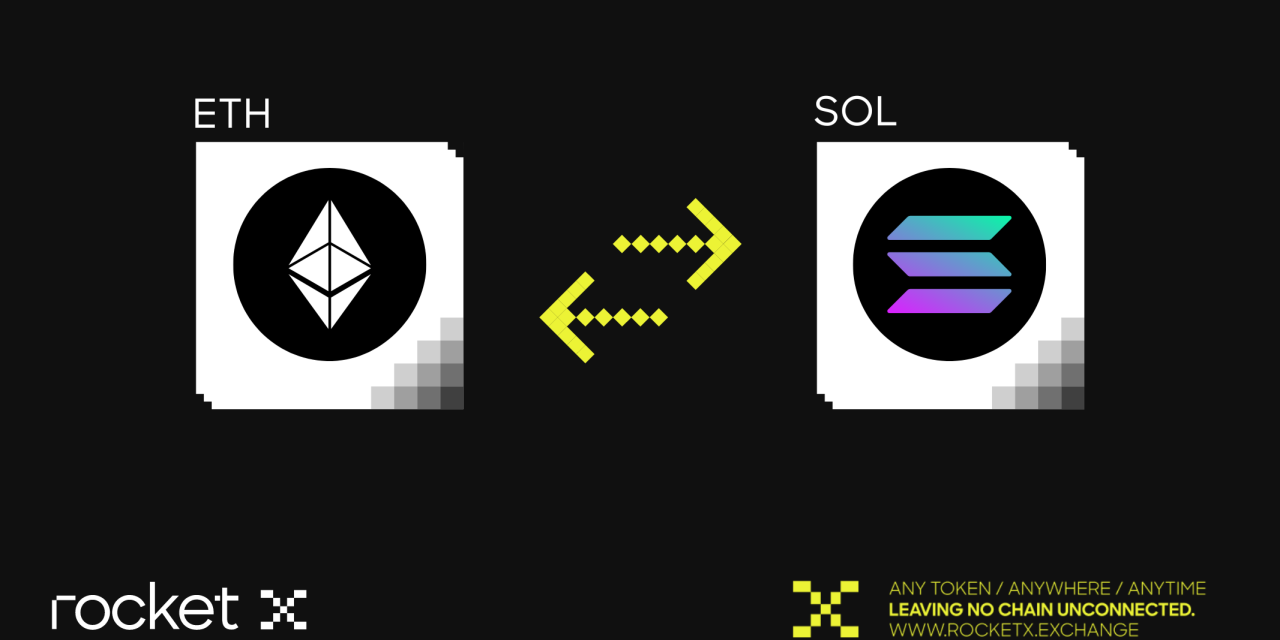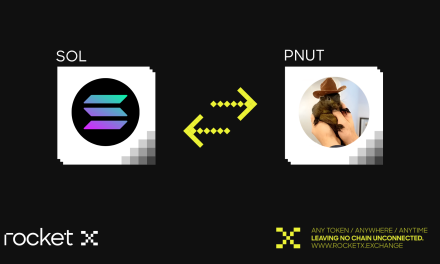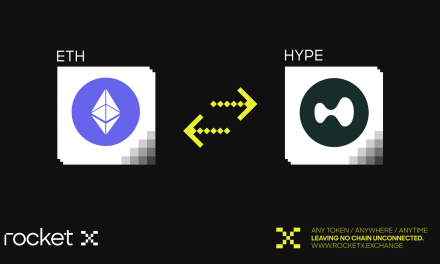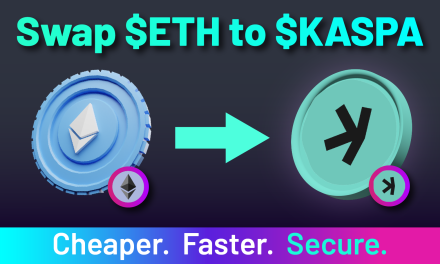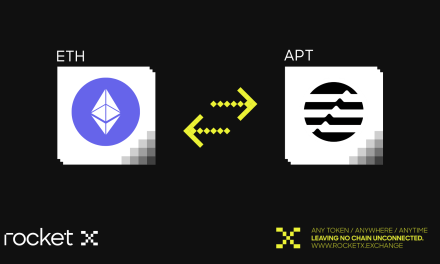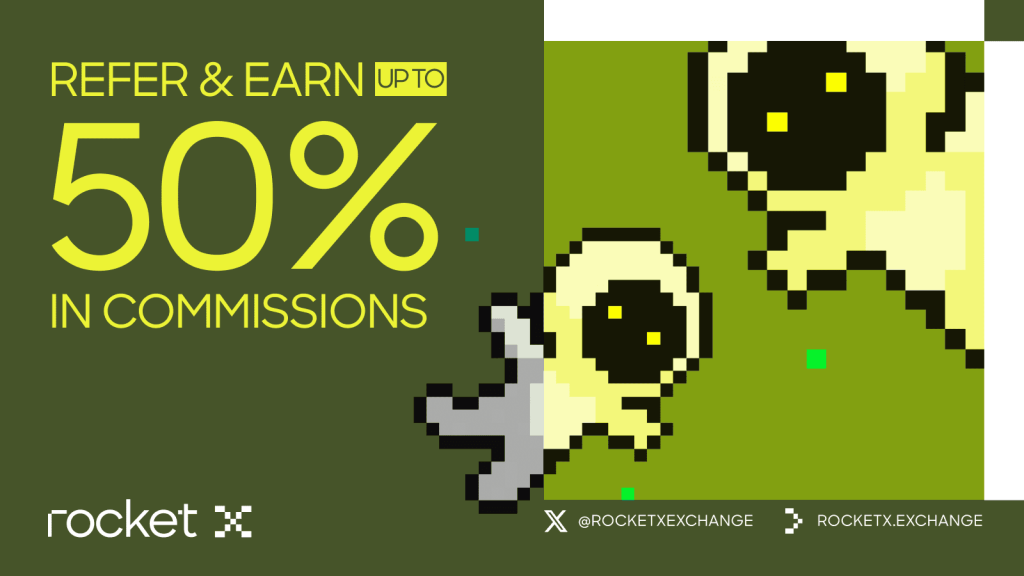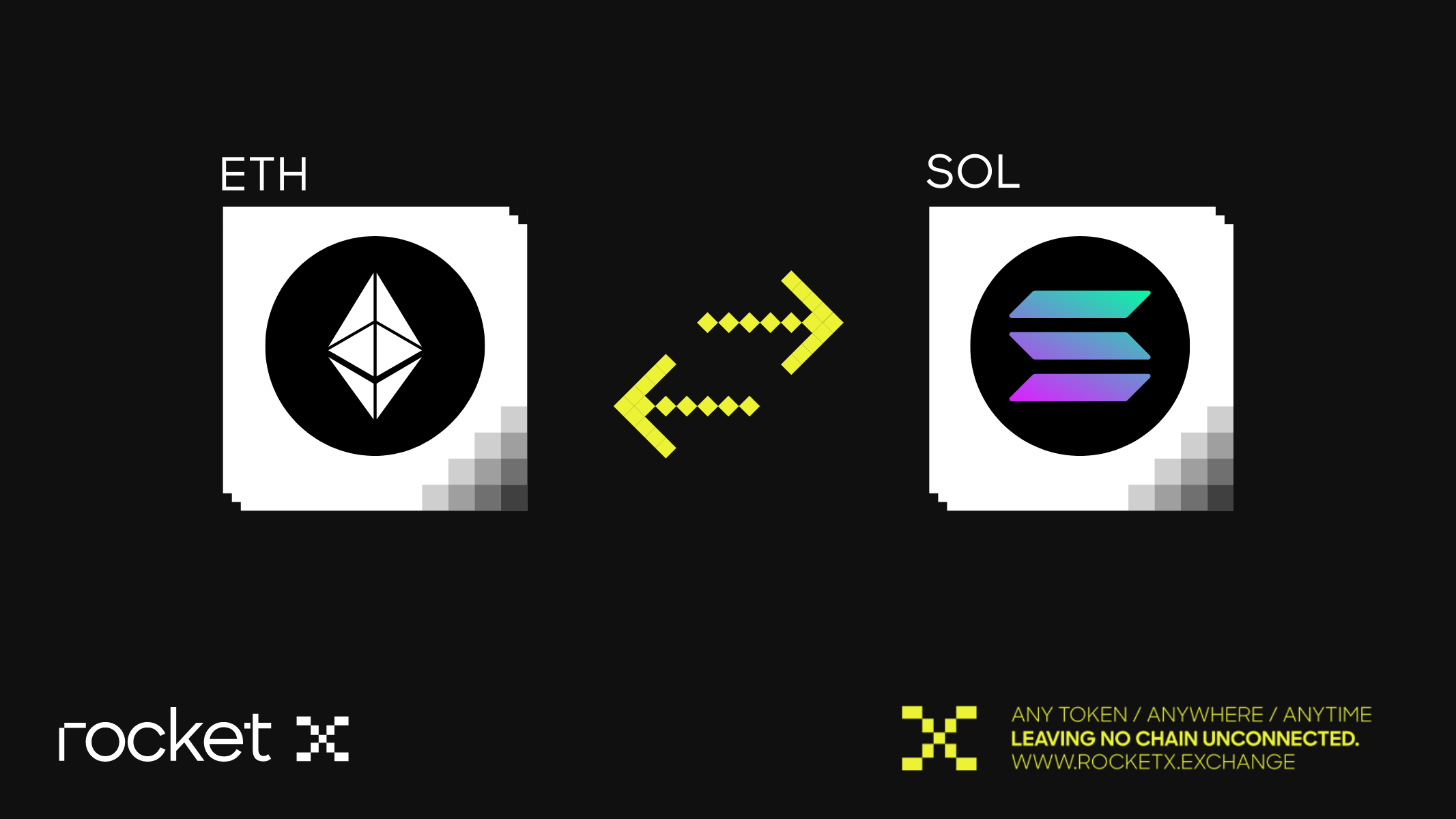
Introduction
In today’s multichain world, holding crypto on just one blockchain is like having a smartphone with no internet—you’re missing out on the real action. And if you’re looking to bridge ETH to SOL, you’re not alone. Thousands of users are moving assets from Ethereum to Solana to access faster transactions, cheaper fees, and a thriving DeFi and NFT ecosystem.
But here’s the catch: bridging is often complicated. Most solutions force you to hop across multiple tools, deal with complex UIs, or face long wait times—not to mention the anxiety of choosing the wrong bridge. That’s where RocketX Exchange flips the script.
Whether you’re a DeFi farmer, NFT flipper, or just want faster and cheaper transactions, RocketX makes bridging as easy as swapping. And in this guide, we’ll walk you through:
- What is the Solana Blockchain
- Why users are shifting from Ethereum to Solana
- How to bridge ETH to SOL in minutes using RocketX
- A complete video guide for visual learners
By the end of this article, you’ll be fully equipped to move your Ethereum assets to Solana in the fastest, safest, and smartest way possible.
What is Solana? A High-Speed Blockchain for the Future
Solana is one of the fastest and most scalable blockchains in the world. Built for real-time applications like DeFi, NFTs, and gaming, Solana processes transactions at lightning speed with fees so low, they’re practically free.
Launched in March 2020, Solana was founded by Anatoly Yakovenko, a former engineer at Qualcomm. Together with Greg Fitzgerald, Stephen Akridge, and Raj Gokal, he created Solana Labs—a project focused on solving the blockchain trilemma: scalability, decentralization, and security.
What makes Solana unique is its innovative consensus model: a combination of Proof of History (PoH) and Proof of Stake (PoS). This hybrid mechanism allows the network to process over 65,000 transactions per second (TPS), without relying on Layer 2s or rollups.
Whether you’re trading on Solana-based DEXs like Jupiter, exploring NFTs on Magic Eden, or testing dApps like Drip Haus or Tensor, Solana’s speed and cost-efficiency offer a superior user experience.
In short, Solana is the chain of choice for speed, scale, and innovation, which is exactly why so many Ethereum users are bridging their assets over.
Why Bridge from Ethereum to Solana?
While Ethereum remains the backbone of DeFi and Web3 innovation, it often struggles with network congestion and high gas fees, especially during peak demand. These limitations have opened the door for high-speed alternatives like Solana, which offer smoother user experiences and near-instant finality.
Here’s why thousands of users are moving their assets from Ethereum to Solana:
- Speed That Matches Web2: Ethereum processes 15–30 TPS on average. Solana? 65,000 TPS. That’s game-changing for real-time apps.
- Affordable for Everyone: Swapping or minting on Ethereum can cost you $20–$50 in gas. On Solana, you can do the same for less than a cent.
- Access to a Unique Ecosystem: Some of the most innovative NFT collections, games, and yield farms are exclusive to Solana. If you’re not on Solana, you’re missing out.
- Multichain Is the Future: Bridging from Ethereum to Solana allows you to interact with both ecosystems, hedging risks, and maximizing opportunities.
Whether you’re an active trader, NFT collector, or just someone looking to explore what Solana has to offer, bridging ETH to SOL is the first step in going multichain.
HOW TO CONVERT, SWAP, OR BRIDGE ETH TO SOL (OR ANY TOKEN TO SOLANA)
Bridging crypto assets between blockchains is no longer a complex task—RocketX Exchange makes it seamless. As a leading cross-chain aggregator supporting nearly 200 blockchains, RocketX allows users to convert, swap, or bridge ETH to SOL (or any other token to Solana) in just a few clicks.
Whether you’re moving Ethereum’s ETH to Solana or swapping any token from supported chains directly into SOL, this guide walks you through the process step-by-step using RocketX.
Step 1: Visit RocketX and Connect Your Wallet
Go to www.rocketx.exchange and click on “Connect Wallet”. RocketX supports all major wallets, including MetaMask, Coinbase Wallet, Trust Wallet, and more.
Step 2: Choose Your Source Network and Token
Once your wallet is connected, select Ethereum as the source network and choose ETH as the token.
Want to bridge something else like USDT, USDC, or MATIC? No problem.
RocketX allows you to bridge any supported token from Ethereum or other chains directly to Solana. Just choose your preferred source network and asset.
Step 3: Select Solana as the Destination Network
From the destination dropdown, select Solana as the network and SOL as the token.
This tells the RocketX app that you want to receive SOL tokens on the Solana blockchain in exchange for your ETH or other assets.
Step 4: Enter Your Solana Wallet Address
Before proceeding, make sure you’ve a Solana-compatible wallet like Phantom, Solflare, or Backpack. You’ll need a valid Solana (SPL) address to receive the bridged tokens.
If your Solana wallet is already connected, the app will auto-fill your address. Otherwise, copy and paste your SOL wallet address into the destination field manually.
⚠️ Note: You must have a Solana wallet address before bridging. If you don’t, create one.
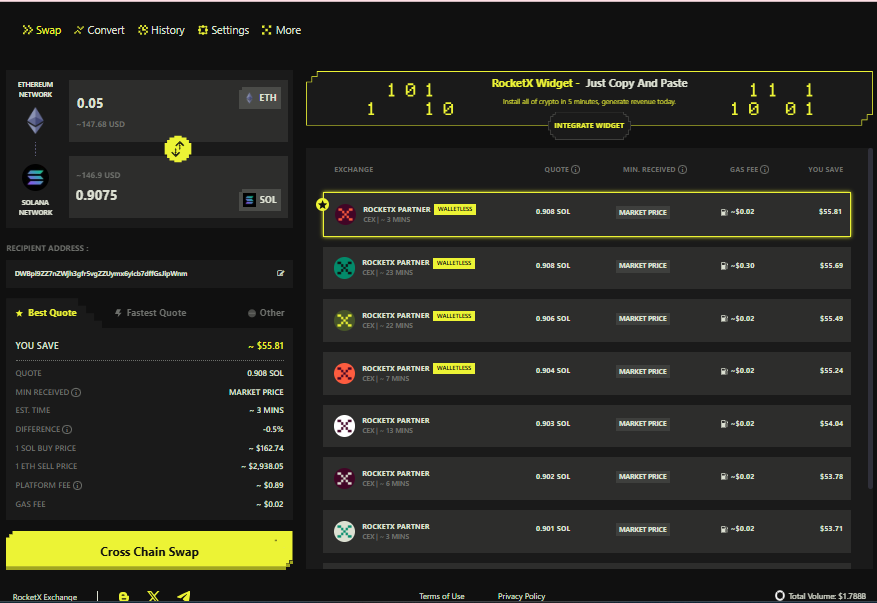
Step 5: Click “Cross-Chain Swap” and Confirm the Transaction
Once all selections are made, click on the “Cross-Chain Swap” button.
RocketX will fetch the best or fastest route using its 500+ liquidity sources. You’ll then approve the transaction in your wallet, and RocketX will handle everything—from routing to swapping—behind the scenes.
That’s it! In just a few minutes, your assets will be converted to SOL and delivered directly to your Solana wallet.
With RocketX, there’s no need for multiple tools, bridges, or manual swaps—it’s a unified platform that simplifies cross-chain transactions across nearly 200 networks.
Prefer a Visual Walkthrough?
Watch our short youtube video tutorial on bridging ETH to Solana using RocketX.
What to Do After Bridging to Solana
Once your funds have been successfully bridged to the Solana network, it’s time to explore everything Solana has to offer. Start by storing your tokens in a trusted Solana wallet like Phantom, and if you need help, this quick setup video has you covered.
From there, you can dive into:
- Swap tokens using top Solana DEXs like Jupiter, Orca, or Raydium
- Explore DeFi protocols like MarginFi, Drift, and Kamino
- Stake your SOL directly through wallets or validators to earn passive rewards
- Trade NFTs on marketplaces like Magic Eden or Tensor
And if you’re a fan of memes and on-chain chaos, don’t miss out on Pump.fun or Bonkfun—where meme coins are born and degens thrive.
Bridging is just the beginning. Solana is fast, fun, and full of opportunities waiting to be explored.
Conclusion
As the crypto space moves toward a multichain future, the ability to transfer assets smoothly between ecosystems like Ethereum and Solana is no longer a luxury—it’s essential. Whether you’re looking to escape high gas fees, explore Solana’s thriving DeFi landscape, or trade low-cost NFTs, bridging ETH to SOL is a powerful move.
Thanks to simplified cross-chain solutions, you no longer need to juggle multiple tools or worry about bridge compatibility. With just a few clicks and a Solana wallet in place, you can complete the transfer securely and access one of the most efficient and affordable blockchains in the market.
Now that you’re equipped with the knowledge, tools, and steps, you can explore Solana, swap tokens, stake, or mint your next NFT. The multichain journey has just begun.
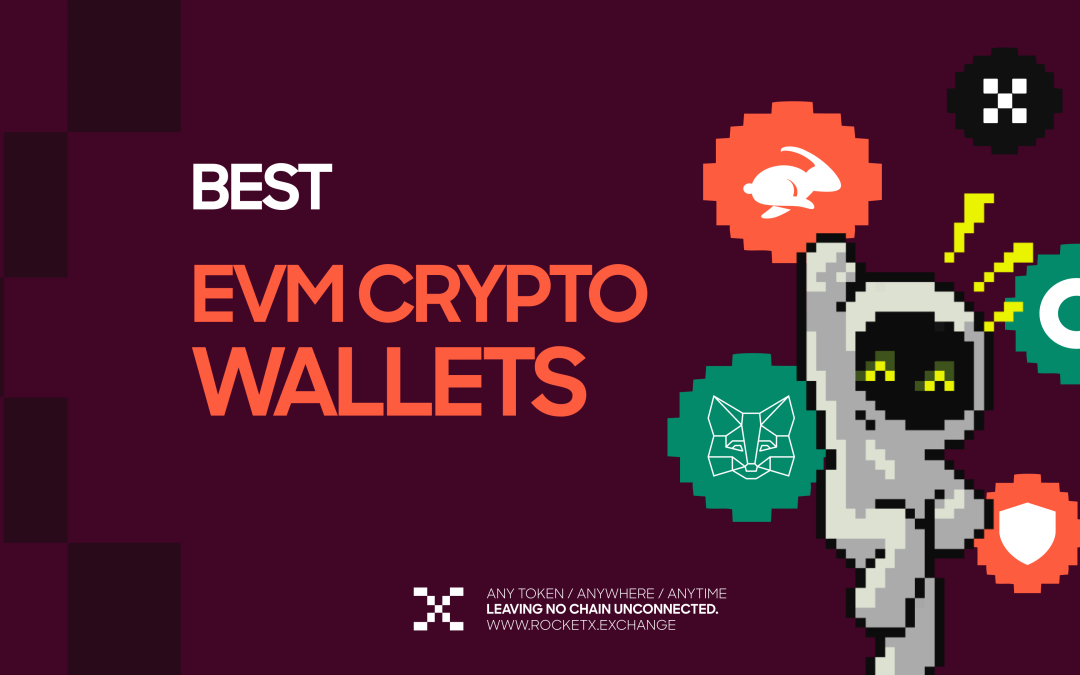
EVM Wallets Explained: Features, Benefits & the Top 5 Picks for Web3 Users
Introduction In the rapidly expanding universe of Web3, choosing the right wallet can mean the difference between a smooth DeFi journey and a frustrating experience. With the growing dominance of EVM-compatible blockchains like Ethereum, Arbitrum, Optimism, BNB Chain,...
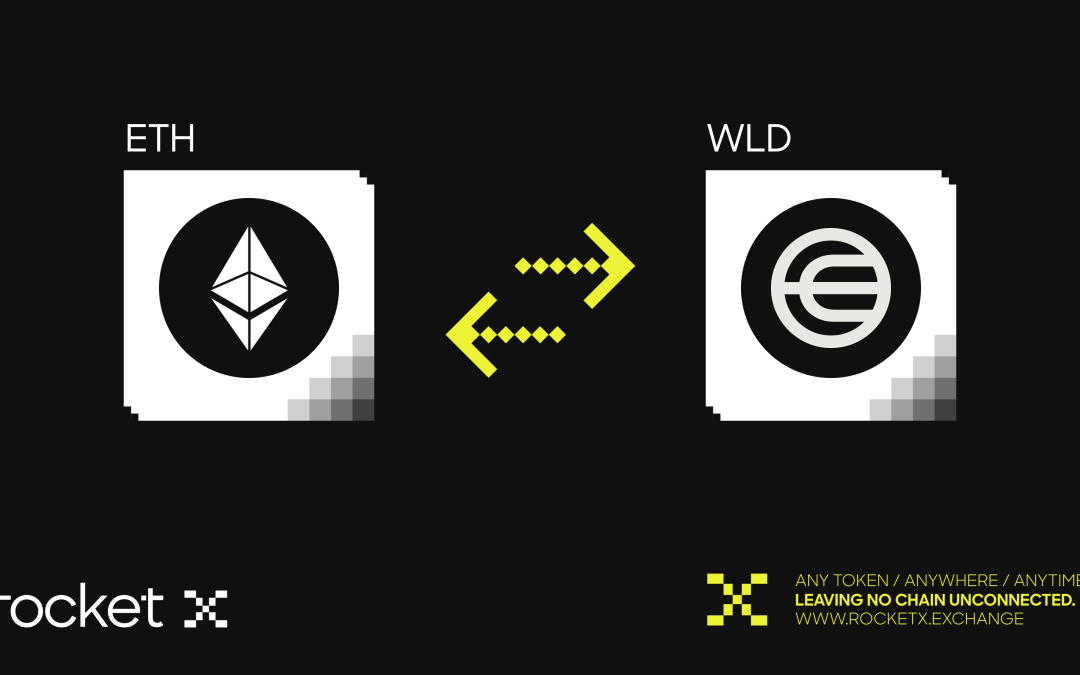
Worldcoin (WLD) and World Chain: Bridging the Future of Identity & Finance
Introduction In today’s digital landscape, distinguishing real human users from bots has become increasingly difficult. The explosion of fake accounts, AI-generated identities, and spammy behavior has eroded trust across online platforms. This is where World Chain...

